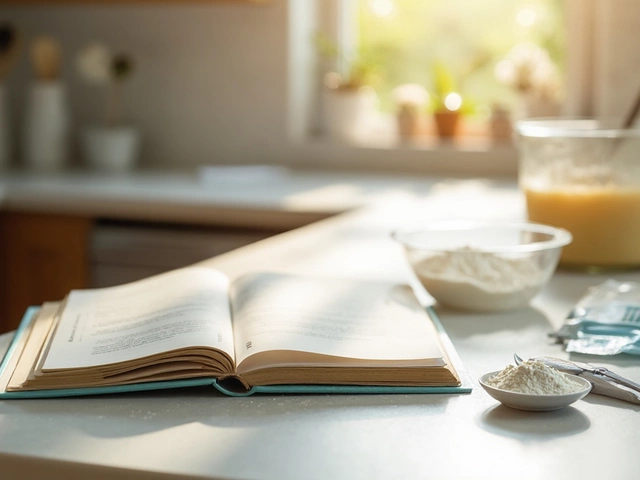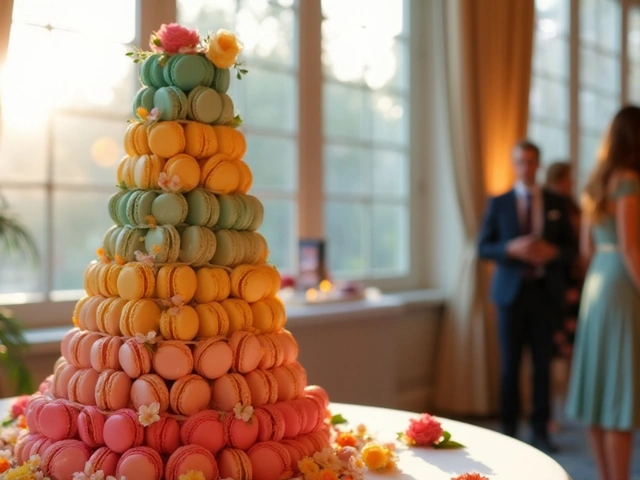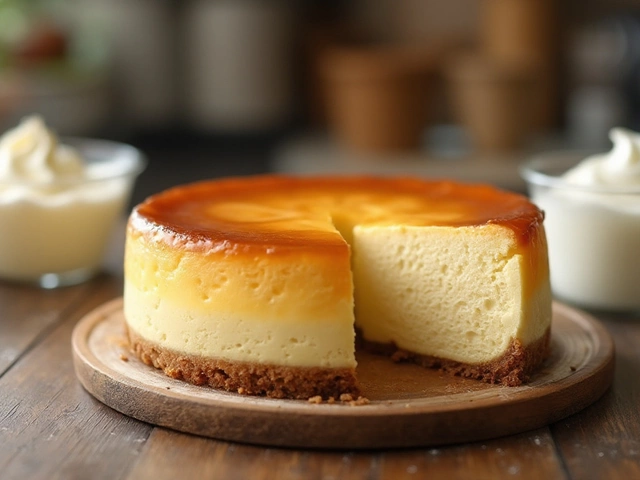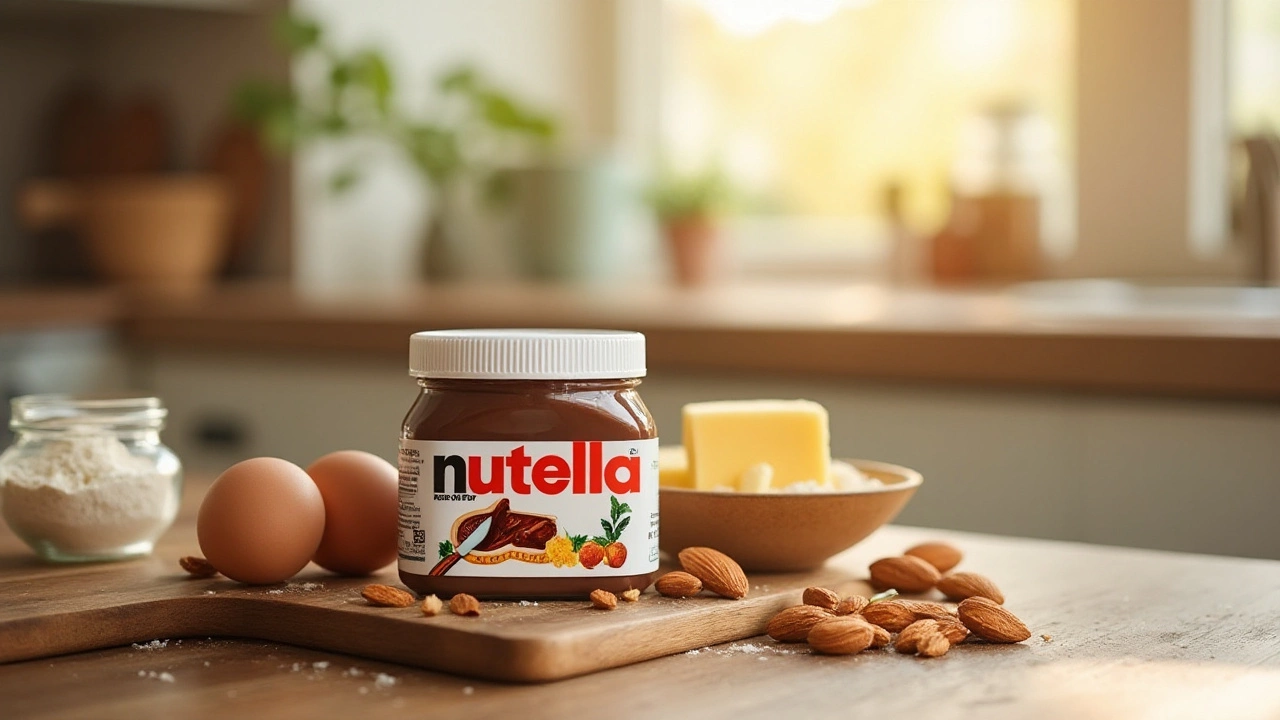
Everyone loves a creamy, sweet spread, and Nutella seems to fit that bill perfectly. But for those who need to keep gluten out of their diets, the question 'Is Nutella gluten-free?' might linger in their minds. This delightfully scrumptious concoction, adored by children and adults alike, demands a bit of inspection from those adhering to a gluten-free lifestyle.
In this article, we will dissect the ingredients commonly found in Nutella, examine any risks of cross-contamination, and offer you insightful tips on how to incorporate this beloved spread into your gluten-free baking repertoire. If creating delectable gluten-free cakes is your thing, or if you're just nutty for Nutella, read on to discover how you can safely enjoy your favorite hazelnut spread.
- Understanding Nutella's Ingredients
- Cross-Contamination Considerations
- Nutella in Gluten-Free Baking
- Delicious Gluten-Free Cake Ideas
- Tips for Safe Gluten-Free Baking
Understanding Nutella's Ingredients
When it comes to beloved spreads like Nutella, knowing exactly what goes into that jar can be a bit like peeking into a magician's hat. You might just find some surprises! Nutella's key ingredients include sugar, palm oil, hazelnuts, cocoa solids, milk powder, lecithin, and vanillin. Sugar, serving as the primary component, gives Nutella its signature sweetness, while palm oil lends that smooth, spreadable consistency, though it's worth noting this ingredient has sparked environmental debates. Hazelnuts take the center stage, contributing the nutty richness that fans swoon over, often accounting for a significant portion of the recipe—around 13% to be exact. Behind the scenes, cocoa solids and milk powder form the luscious, creamy base, enhanced by the emulsifier lecithin, typically derived from soy, ensuring that each spoonful is blissfully uniform. Finally, vanillin, an artificial flavor, rounds off the flavor profile with a hint of fragrant vanilla.
While Nutella’s basic ingredients don't inherently contain gluten, cautious consumers must consider potential cross-contamination, especially given how easily gluten can sneak into foods during processing. Still, it’s not all grim; according to official statements from Nutella’s parent company Ferrero, Nutella is indeed labeled gluten-free, implying compliance with stringent testing ensuring gluten levels remain below the established safe threshold. Yet, those with high sensitivity or celiac disease might still want to consult healthcare professionals or contact the manufacturer directly for peace of mind. A fascinating tidbit: did you know Nutella's origins date back to World War II when Pietro Ferrero, confronted by cocoa shortages, decided to stretch the luxury ingredient with abundant hazelnuts, birthing the cherished spread we embrace today?
“Nutella is beloved worldwide, not just for its taste but also for its intriguing history and careful balancing of diverse ingredients.” — Julia Harris, Food Historian
Diving deeper into the specifics, if you're managing dietary routines, the nutritional facts of Nutella might be of interest. Per a two-tablespoon serving, Nutella contains roughly 21 grams of sugar and 11 grams of fat, which might be an indulging treat for some. However, paying attention to portions is key if you’re mindful of calorie intake. Table 1 below outlines Nutella’s nutritional composition for consideration in balanced diet planning.
| Nutrient | Per 2 Tbsp Serving |
|---|---|
| Calories | 200 |
| Total Fat | 11g |
| Sugars | 21g |
| Protein | 2g |
With all this delicious information in mind, you’re better prepared to embrace Nutella creatively in your culinary quests, especially if you’re crafting something as delightful as gluten-free cakes. Knowing your ingredients empowers you to make informed, delectable choices, keeping your dietary needs and taste buds equally satisfied. So the next time you spread, layer, or dollop Nutella on your masterpiece, you can relish it even more, enriched by the knowledge of what makes it so deliciously magical.
Cross-Contamination Considerations
When it comes to consuming products like Nutella, especially for those avoiding gluten, understanding cross-contamination is crucial. Cross-contamination happens when a gluten-free food comes into contact with gluten-containing substances during manufacturing or through shared utensils. In theory, Nutella as a product is made with ingredients that do not naturally contain gluten, such as sugar, palm oil, hazelnuts, cocoa solids, skimmed milk, powdered whey, lecithin, and vanillin. Despite this reassuring list, the broader context of production processes plays a role in gluten presence, albeit unintentionally.
Ferrero, the company behind Nutella, does claim that their product is gluten-free. However, it's important to acknowledge whether these assertions also extend to the environments where Nutella is produced and packaged. Do those facilities handle wheat or other gluten-containing products? The answer might influence whether cross-contamination is a risk. Ferrero's compliance with manufacturing protocols, including cleaning and separate lines for gluten-free products, is an important factor for consumers concerned about hidden gluten in seemingly safe foods. According to the Celiac Disease Foundation, 'cross-contact with gluten can occur in shared kitchen spaces and during the manufacturing process.'
"Cross-contact with gluten can occur in shared kitchen spaces and during the manufacturing process." – Celiac Disease Foundation
It's noteworthy that while many manufacturers may label their products as gluten-free, official certification by a third-party body is an additional layer of assurance. This certification usually requires products to have below a specified threshold of gluten parts per million (ppm), ensuring the safety of those with celiac disease or gluten sensitivities. For companies that are not gluten-exclusive, the risk of cross-contamination can be heightened when protocols aren't rigorous.
Another aspect to consider when assessing potential contamination risks is the handling process post-purchase. In home settings, cross-contamination can occur if utensils or surfaces previously used with gluten products are not thoroughly cleaned before being used with Nutella. Storage is another vector; keeping gluten-free products alongside gluten-rich products on the same shelves may lead to accidental contact. Because gluten can be present in dust-sized particles or crumbs, vigilance is required even in spaces assumed to be safe.
For those concerned about maintaining strict gluten-free standards, one can remain proactive by checking the latest production information from the manufacturer's website. Additional inquiries, like contacting customer service for detailed information on production practices, can also provide valuable peace of mind. While the product's packaging is a critical source of information, consumer vigilance remains the most robust defense against unintentional gluten exposure. Remembering these key points, gluten-free consumers can continue to enjoy Nutella without the unwelcome surprise of encountering gluten.
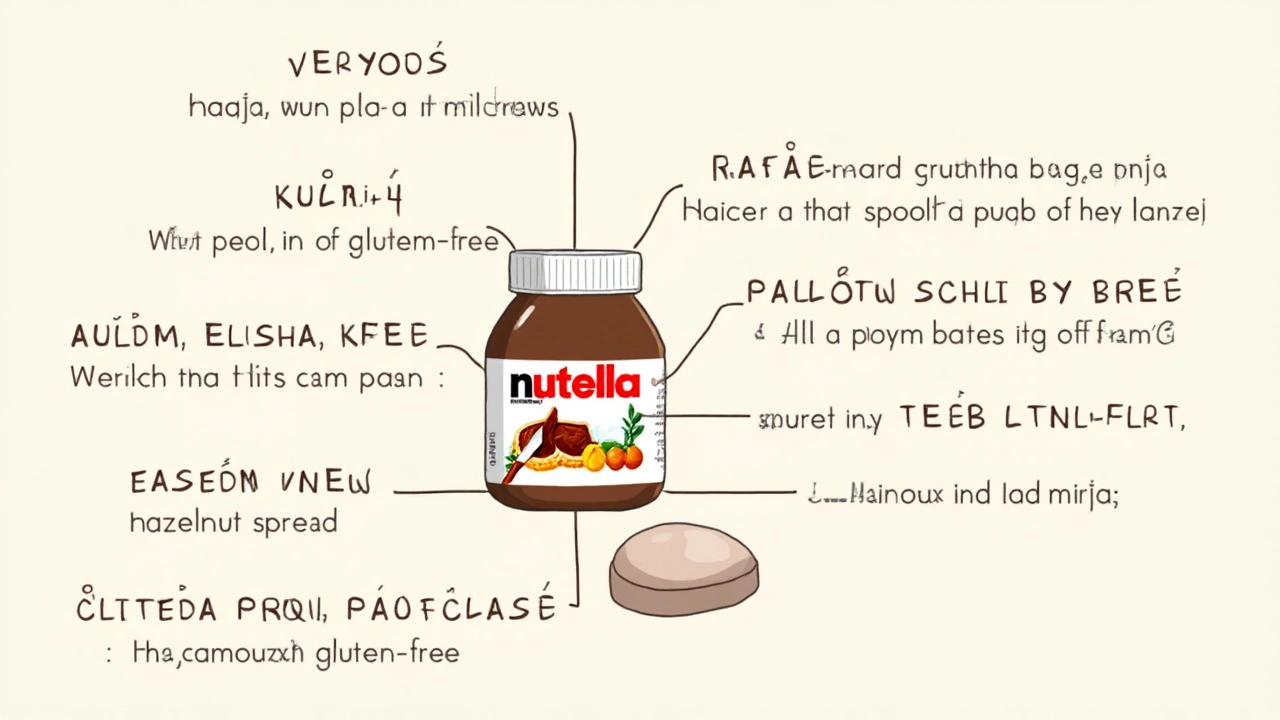
Nutella in Gluten-Free Baking
Creating mouthwatering gluten-free baked goods might sound challenging, but incorporating Nutella into these recipes can add a delicious twist without compromising your dietary needs. Nutella, the celebrated hazelnut spread, is often regarded as a cherished ingredient in many kitchens around the world. Its smooth, creamy texture makes it an excellent addition to gluten-free cakes, cookies, and muffins, providing a rich depth of flavor and a gorgeous, indulgent swirl.
One of the first things to know about using Nutella in gluten-free baking is its consistency. Nutella's creamy nature can work as a wonderful binding agent. In gluten-containing recipes, gluten helps give structure to your baked goods, but when working without gluten, Nutella can lend that structural support while keeping your cakes moist and tender. To take full advantage of Nutella's texture, consider using it as part of your batter or as a luscious filling for layered cakes or cupcakes. The memorable taste of Nutella complements a variety of flavors, particularly vanilla, almond, and coffee, making it an adaptable choice for a wide array of gluten-free dessert recipes.
While exploring Nutella-infused treats, it is important to bear in mind the role of sweetness it plays. Because Nutella is naturally sweetened, it can reduce the need for additional sugar in your recipes, which may be advantageous for those looking to cut down on sugar intake. However, the trick lies in balancing flavors so that the sweetness doesn't overpower your creation. Consider pairing Nutella with ingredients like cocoa powder or a dash of sea salt to create a more complex taste profile. These additions can accentuate the rich nutty tones in Nutella and bring a sophisticated nuance to your gluten-free cakes.
It's also exciting to highlight the versatility of Nutella not only as an ingredient but also as an eye-catching decoration and flavor enhancer. You can drizzle Nutella on top of a cake for an aromatic finish or use it as a decadent frosting alternative. Swirling Nutella through a simple sponge cake before baking can create beautiful marbled patterns that are as pleasing to the eye as they are to the palate. To maximize the Nutella impact, try it in a gluten-free lava cake where a molten center oozes out rich, flavorful Nutella, delighting any lucky taste tester who takes a bite.
Many bakers looking to substitute ingredients often overlook Nutella as a potential base for gluten-free baking because they stick to traditional alternatives like almond or coconut flour. However, Nutella offers a distinctive and delightful character that is difficult to replicate with substitution alone. Not only does it provide unique flavor and consistency, but it also offers an element of surprise and indulgence in your gluten-free goodies. Next time you're contemplating a delicious, gluten-free treat, don't forget the magic that Nutella can bring to your culinary adventures.
"Nutella is not just an addition to your recipe; it can redefine the profile of your baked goods. Its versatility and unique taste make it a staple for creative gluten-free baking," notes Julia Turner, a renowned gluten-free pastry chef who has won over sweet enthusiasts with her innovative approach to dessert crafting.
Delicious Gluten-Free Cake Ideas
Creating a delightful dessert that fits a gluten-free lifestyle doesn't have to be a daunting task. In fact, with the right ingredients like Nutella, you can whip up cakes that taste just as spectacular as their gluten-heavy counterparts. Let's delve into a few irresistible cake ideas that stay true to being gluten-free while incorporating the rich, creamy goodness of Nutella.
One of the simplest ways to enjoy Nutella in a cake is to try a flourless chocolate cake. This type of cake relies heavily on the sumptuousness of dark chocolate and hazelnut spread. Start with melting some dark chocolate with Nutella, and mix in sugar, eggs, and just a touch of butter. The secret here is to whisk the eggs until they’re incredibly fluffy, ensuring the cake rises and has a great texture without using a traditional flour base.
Moving on to another enticing option, you can bake banana Nutella swirl cupcakes. These gluten-free delights use ripe bananas to provide natural sweetness and moisture, mixing perfectly with Nutella for a lovely marbled effect. Simply mash bananas and mix them with almond flour, eggs, and a little vanilla extract. Spoon your batter into cupcake liners and swirl in generous spoonfuls of Nutella before popping them into the oven.
According to Chef Oliver Russell, "Nutella's smooth texture is a great complement to gluten-free flour alternatives, as it adds both flavor and moisture, enhancing the overall texture of the cake."
If you're looking to impress at a gathering, consider crafting a gluten-free Nutella tier cake topped with fresh berries. Use a mixture of almond meal and coconut flour to structure your layers, adding Nutella between each for a burst of flavor. This cake can be elegantly decorated with raspberries and blueberries, providing both aesthetic appeal and a refreshing taste contrast to the rich hazelnut filling.
Finally, for those who enjoy a little caffeine kick in their desserts, a Nutella cappuccino cake awaits discovery. You will mix finely ground coffee into your gluten-free flour mixture, then top it off with a creamy Nutella frosting. This blend of flavors delivers a sophisticated dessert experience, combining bitterness with the sweet hazelnut to create a unique profile that’s sure to inspire smiles.
To wrap things up, the table below shows a quick comparison of the main ingredients and bake times for each cake idea to help you decide which one might suit your occasion better:
| Cake Type | Main Ingredients | Bake Time |
|---|---|---|
| Flourless Chocolate Cake | Dark Chocolate, Nutella, Eggs | 25 minutes |
| Banana Nutella Swirl Cupcakes | Bananas, Almond Flour, Nutella | 20 minutes |
| Nutella Tier Cake | Almond Meal, Coconut Flour, Nutella | 35 minutes (per layer) |
| Nutella Cappuccino Cake | Gluten-Free Flour, Coffee, Nutella | 30 minutes |

Tips for Safe Gluten-Free Baking
Baking gluten-free can at first seem like solving a culinary mystery, especially when you're keen on ensuring all your ingredients, including beloved ones like Nutella, remain free from gluten hazards. The good news is, with a little mindful preparation and understanding, you can easily tackle this challenge and embrace the joy of making delicious gluten-free cakes at home. Start by thoroughly checking all labels. The rule of thumb is always to ensure that every ingredient you select proudly wears a gluten-free badge. Many of the usual culprits are those refined and sneaky additives that sometimes make their clandestine entry into pre-packaged goods. So, turn this into a habit—pick those jars and packets, and give them the scrutiny they deserve.
The kitchen can be a hotspot for cross-contamination. Imagine you're dusting your counter with flour while using the same bowl for a gluten-rich cake and then for a gluten-free recipe—this is where mishaps lie. To dodge these missteps, maintain separate sets of utensils, bowls, and baking essentials if you routinely bake both gluten and gluten-free recipes. This might sound like extra work, but it is a small price for the confidence of keeping your dishes strictly safe. For those who want an extra layer of protection, there are handy gluten detection kits available, offering instant peace of mind in identifying any traces you might have missed during your prep.
There's a whole world of best practices out there for those seeking mouthwatering gluten-free cakes. One successful strategy is to explore the world of gluten-free flours. Options such as almond flour, coconut flour, and rice flour can add delightful textures and flavors to your bakes, ensuring not only safety but also the sensory experience you seek. When selecting Nutella for your gluten-free adventures, check for any changes in ingredients if you switch brands, as they may vary slightly and not have the same assurances.
Mary Jane, a renowned gluten-free baking guru, once said, "In every spoon you stir with love and care, you'll find a little magic, a little science that keeps our bellies safe and our cravings satisfied."
Time to touch on measurements and precision—the right balance can sometimes elude even the seasoned baker. Invest in a reliable kitchen scale; measuring ingredients like flours by weight rather than volume minimizes errors and ensures reproducible results each time. If you're wondering how to give your cakes the rise they deserve, let the eggs do the heavy lifting. They're not just binders in gluten-free baking but also provide structure and lift. And for those substituting eggs, consider the magic of flaxseed or chia seeds, both giving an extra boost to your baked goods.
Nothing ruins a perfect baking day like forgetting a vital ingredient or missing a step amid the beautiful chaos. Prepare a checklist and follow it stage by stage. Gluten-free batters can be finicky—they thicken as they stand. So, don’t tarry while baking once you’ve mixed up your batter; move swiftly to ensure everything works in your favor. And remember, baking is as much art as it is science; tweaking ingredients and methods is not just allowed but often encouraged based on your findings, tastes, and even the local weather which can impact flour absorption.
| Gluten-Free Flour Type | Best Used For |
|---|---|
| Almond Flour | Cakes, cookies |
| Coconut Flour | Pancakes, muffins |
| Rice Flour | Breads, pastries |
With these trusty tips under your belt, your parameters are set for a rewarding gluten-free baking experience. Reflecting the rainbow of diverse diets, making sure each crumb is a safe delight requires a delicate balance of knowledge, preparation, and a sprinkle of creativity. So, stay inspired, keep your gluten-free passion alive, and your kitchen will soon radiate the sweetness of your careful crafts, Nutella spread and all!


